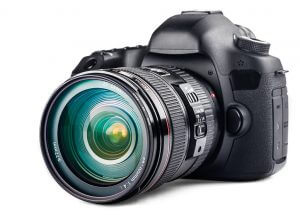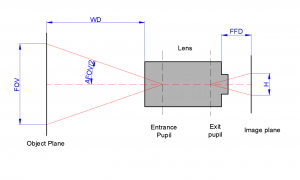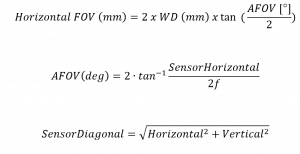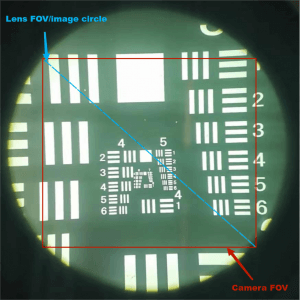Posted on: Monday, June 27th, 2022 In: Deep Dive into Optics
Field of view (FOV) is defined as the maximum area that a device can capture. The larger the field of view, the more data can be captured at one time, so it will require fewer images to capture an entire target.
FOV is specified in one of two ways: angular field of view and sized field of view (object size at a specific working distance).

The lens focal length and sensor size both factor into determining the FOV. Assuming the lens focal length is fixed, the larger the sensor, the larger the required FOV.
Though camera FOV can be measured horizontally, vertically, or diagonally, it is more commonly measured horizontally, as most sensors are rectangular. This measurement is typically expressed in millimeters.
Camera FOV (or Camera Coverage)


Note: f is the lens focal length.
Camera FOV vs. Lens FOV
The image below shows the difference between the camera FOV and lens FOV.

Note: the maximum image (circle) diameter of the lens should be equal to or larger than the Sensor diagonal size.